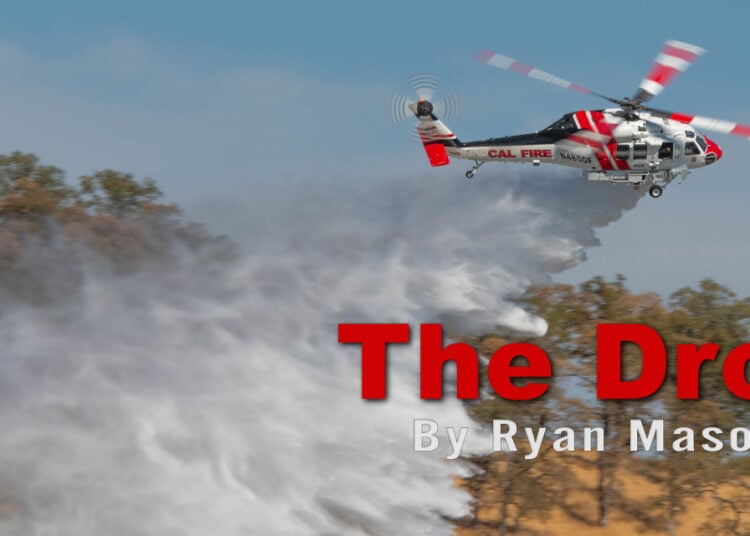During my first solo in a helicopter, upon landing successfully for the first time with no assistance, the feeling I had was somewhat euphoric. Having spent many hours studying and learning to fly - and making many mistakes along the way, as I felt the skids touch the ground on that icy runway in Warsaw, Indiana, I was giddy with the excitement of the realization that "I can do this!"
During the drive home after that flight, after making several calls to those who had helped me along the way and sharing the news of my first solo, my mind turned to the past. Back to my first experiences in aviation. As a child, I grew up just a stone's throw from Melbourne International Airport in Melbourne, Australia, so seeing air traffic in the pattern was a regular occurrence both at home and the many days I spent looking out the window at school that happened to look out across a gully, where in the distance, most of the school had a view of aircraft coming in to land or taking off from the airport.
That may have started my passion for aviation; however, I would be amiss without mentioning every summer when my grandmother would save her pennies for my annual summer visit to take me to do fun things. One of those things that cost nothing was to take me to the airport boundary fence at the local international airport and lay me on the hood of her car to watch planes fly in directly overhead, where I would lay for hours.
As an unaccompanied minor on many international flights between Australia and New Zealand back in the 80s, flight attendants would place you in "the bubble" of the 747, which was for those that have never flown on one, usually the first class and business class section. The flight attendants would place me at the front of the plane, right by the cockpit, so they could watch me and other kids flying unaccompanied. Before the onset of locked cockpits post 9/11, one of the perks back then was always a visit to the cockpit mid-flight to talk to the pilots.
On one such occasion, the pilot, sensing my higher-than-normal level of interest and knowledge of aircraft, explained what a sterile cockpit was. He asked if I knew how to be completely quiet for extended periods, which I stated I did. I was then invited to sit in the jump seat of the plane for landing. For an aviation nut 8-year-old, this was nirvana, and thanks to my tenacious nature, I asked for the chance every flight I had the opportunity in the future, which happened several more times until I stopped making regular flights to New Zealand in my teenage years.
My dreams of flight were replaced with the ambition to be a police officer in my teenage years. My aviation dream was put on the back burner for decades while I forged a career, until working as a police officer one day at a festival where a helicopter arrived to do joy flights. At the time, my police chief approached me, having seen me pause for the helicopter landing, and asked if I had seen a ghost as I was mesmerized by the helicopter landing in the field. I stated that I was fine, but it reminded me of my childhood exposure to aviation a lot.
Shortly after that exchange, I was asked to get into the helicopter to give the pilot the "lay of the land so he could familiarize himself with the area. When the helicopter took off, I was fascinated by everything happening inside the cockpit. By the end of the day, I had made up my mind that I was going to stop making excuses and follow my passion that had been ignited as a small child by a pilot who took enough interest in me to fuel interest in aviation by spending a little time to give a kid a chance to experience something that few had. I sat in the same helicopter the following week, taking my first flight lesson.
The long-winded explanation here leads me to my point. Many of us in the industry are regularly exposed to the public at trade shows or air shows where you may have been asked to do a static display, perform an aerial firefighting demonstration, or even at the fence line of an airport you are operating from. Kids, teenagers, and families are never far away from our industry.
If you have the opportunity, be that person for anyone interested. Use that patch or sticker you give to a kid or that cockpit tour you give a teenager by taking that little bit of extra time to explain what you do or ask what they want to do in the future. It might be that pivotal moment like sitting in the jump seat for the first time or sitting on the hood of a car to watch a jumbo fly over for them. Be the person who ignites a passion that burns like the fire of a thousand suns to steer them into a rewarding career in our industry.
Much like policing (but with differing causal factors), aviation struggles to fill the vacancies within the wider industry. As fuel prices rise, so does the cost of obtaining a license, which, without a burning passion to succeed, will make it harder to find enough pilots with the skillset and hour requirements needed for the aerial firefighting industry in the future.
Without the next generation of pilots who share a passion for aviation and protecting lives and property through what we do in this industry, we won't be able to continue as an industry. So feed that passion any chance, and be that person for someone. You never know; you might just run into someone in the future that you gave their first step in a career.






